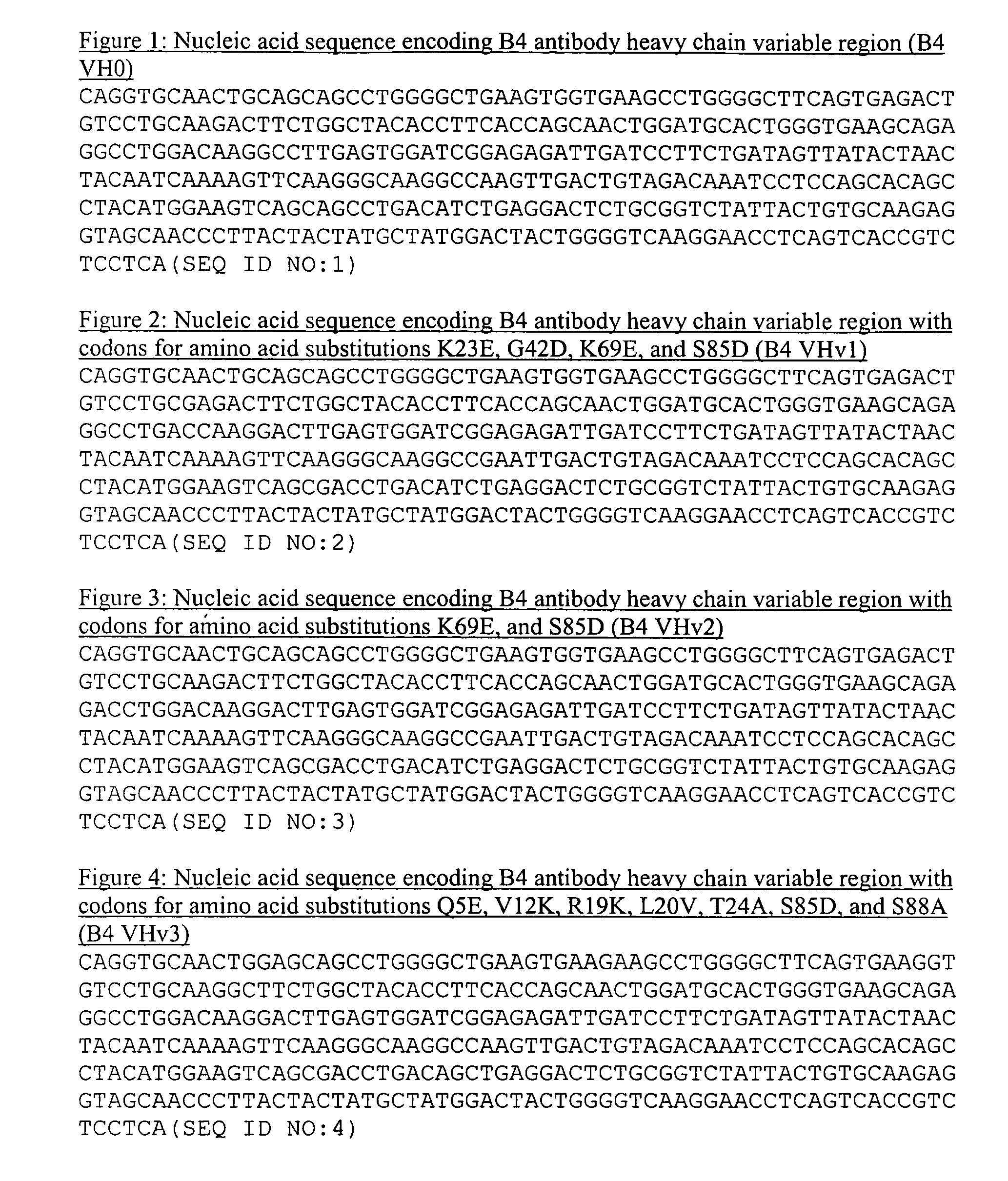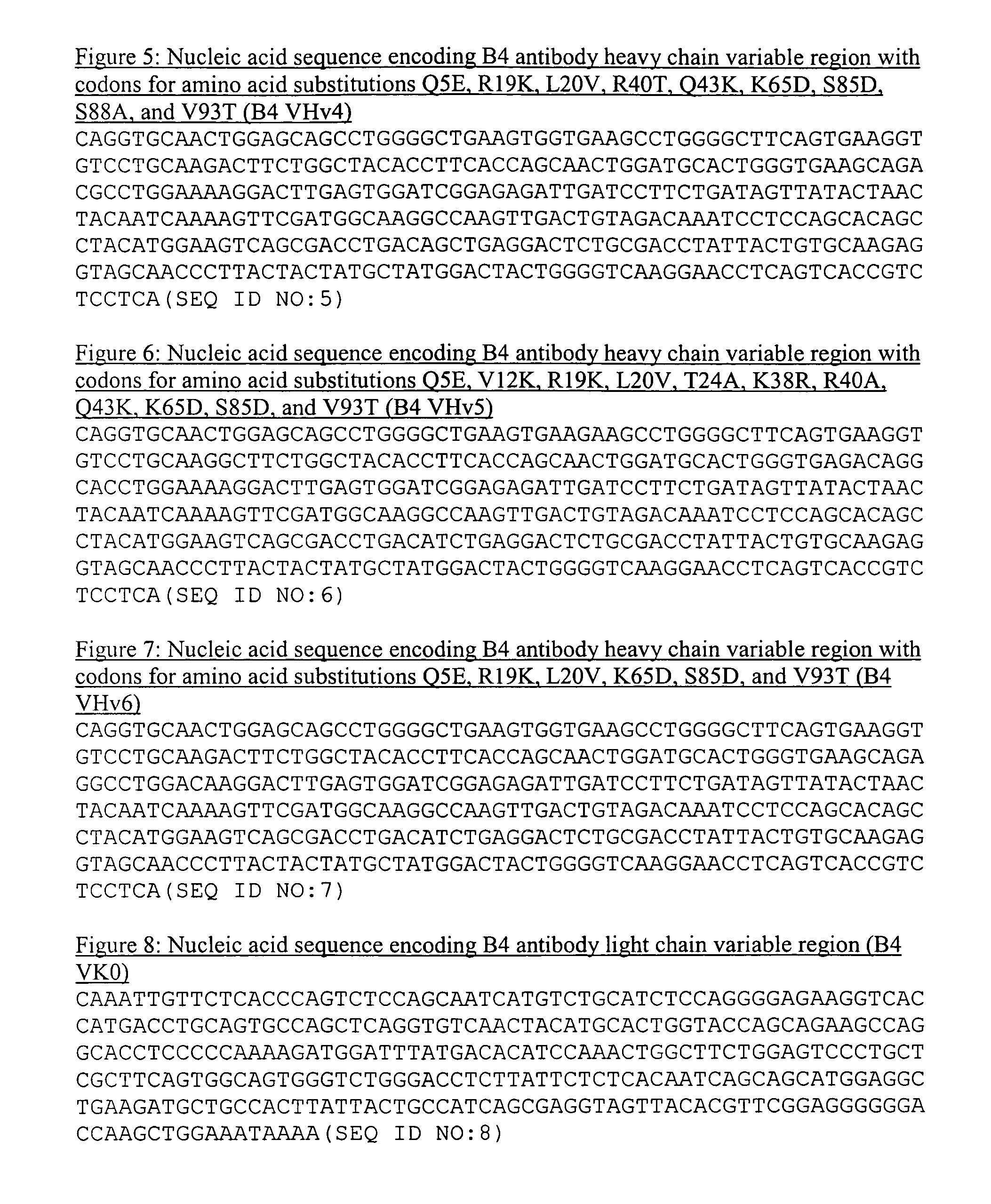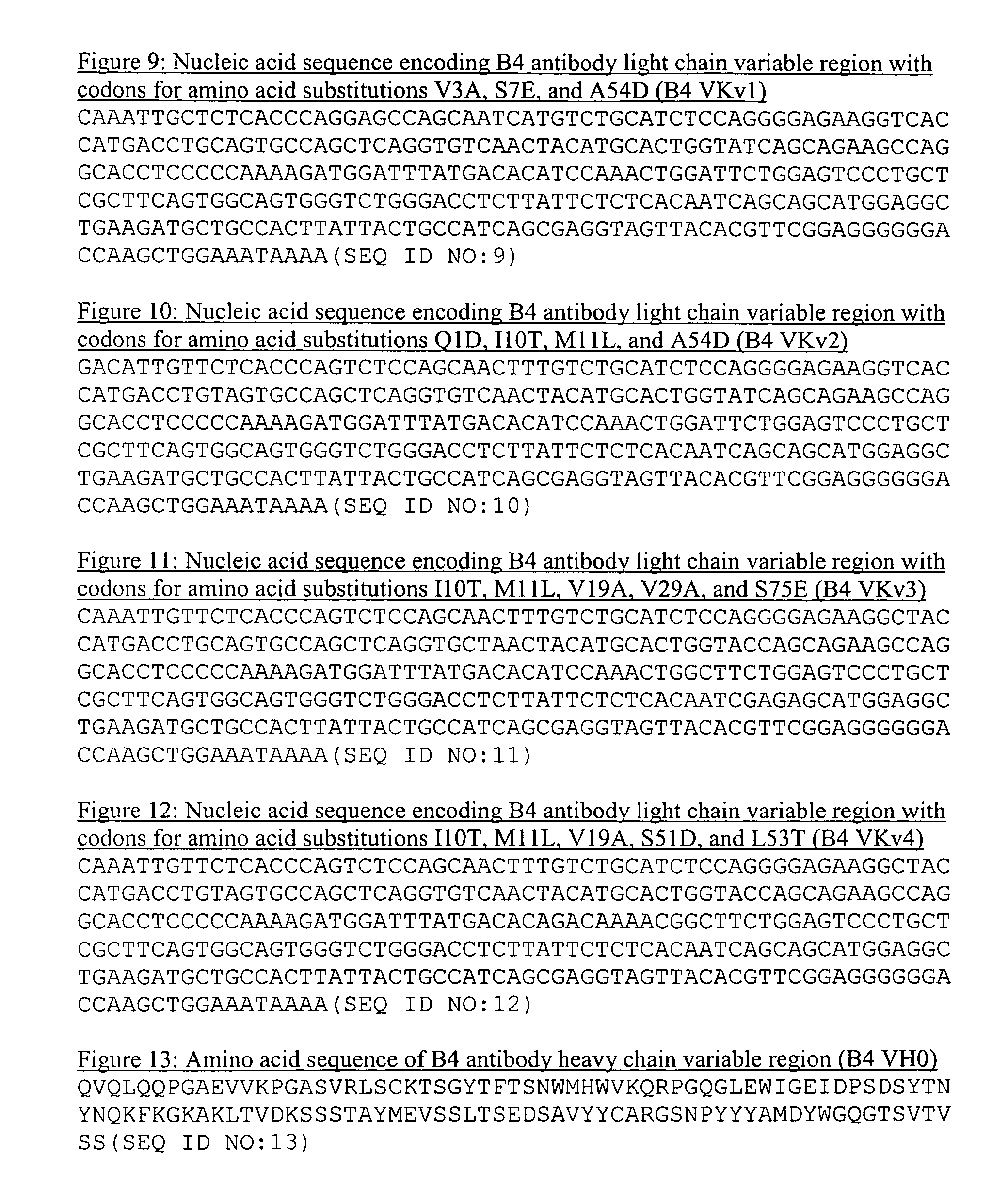Anti-CD19 antibodies with reduced immunogenicity
- Summary
- Abstract
- Description
- Claims
- Application Information
AI Technical Summary
Benefits of technology
Problems solved by technology
Method used
Image
Examples
example 1
Construction of Anti-CD19 Antibodies Containing Variable Region Heavy and Light Chains of the Invention
[0110] Standard genetic engineering techniques were used to introduce nucleic acid sequences encoding a heavy chain region and light chain region of the invention into an appropriate mammalian expression vector. Exemplary cloning strategies are described below. The expression vector pdHL12 is a later-generation pdHL expression vector engineered to contain unique restriction sites for the insertion of nucleic acid cassettes encoding heavy and light chain variable regions. pdHL12 is designed to accept nucleic acids encoding the heavy chain variable region as a Nhe I / Hind III fragment, and nucleic acids encoding the light chain variable region as an Afl II / Bam HI fragment, and to co-express intact antibody heavy and light chains (see, for example US patent application 2003 / 0157054).
[0111] Nucleic acid sequences of heavy chain variable regions of the invention, flanked by sequences w...
example 2
Expression and Purification of Antibodies of the Invention
[0114] The following general techniques are used in the subsequent Examples.
1A. Cell Culture and Transfection
[0115] To express antibodies transiently from mammalian cells, plasmid DNA is introduced into human embryonic kidney 293 cells, or baby hamster kidney (BHK) cells, by co-precipitation of plasmid DNA with calcium phosphate and cells are grown without selection for plasmid maintenance [Sambrook et al. (1989) Molecular Cloning: A Laboratory Manual, Cold Spring Harbor, N.Y.].
[0116] Stably transfected clones are obtained by one of several standard methods, for example, by electroporation or by nucleofection. Electroporation of DNA into mouse myeloma NS / 0 cells is performed as follows. NS / 0 cells are grown in Dulbecco's modified Eagle's medium (DMEM, Life Technologies) supplemented with 10% fetal bovine serum, 2 mM glutamine, 1 mM sodium pyruvate and 1× penicillin / streptomycin. About 5×106 cells are washed once with PBS...
example 3
Determination of the Relative Binding Affinity of B4 Antibodies of the Invention to CD-19 Presenting Cells
[0129] To ascertain that the antibodies of the invention retained binding to CD19 a competition assay was used, in which the strength of these antibodies to inhibit binding of labeled parental B4 antibody (B4 VH0 / VK0) to Daudi lymphoma cells, which bear the CD19 antigen, was measured.
[0130] Biotin-labeled B4 VH0 / VK0 antibody was prepared using the EZ-Iink Sulfo-NHS-LC-Biotinylation Kit (Pierce, # 21430) according to the supplied protocol. The product was dialyzed with a Slide-a-lyzer (Pierce, # 66425), and analyzed by HPLC size exclusion chromatography.
[0131] Briefly, a titration series was prepared of biotin-labeled B4 VH0 / VK0 antibody pre-mixed at a final concentration of 100 ng / ml with one of the unlabeled, experimental B4 VHvx / VKvy antibodies at 800 ng / ml, 400 ng / ml, 200 ng / ml, 100 ng / ml, and 50 ng / ml in a PBS / 2% serum buffer. As a control, the biotin-labeled antibody was...
PUM
| Property | Measurement | Unit |
|---|---|---|
| Fraction | aaaaa | aaaaa |
| Fraction | aaaaa | aaaaa |
| Inhibition | aaaaa | aaaaa |
Abstract
Description
Claims
Application Information
 Login to View More
Login to View More - R&D
- Intellectual Property
- Life Sciences
- Materials
- Tech Scout
- Unparalleled Data Quality
- Higher Quality Content
- 60% Fewer Hallucinations
Browse by: Latest US Patents, China's latest patents, Technical Efficacy Thesaurus, Application Domain, Technology Topic, Popular Technical Reports.
© 2025 PatSnap. All rights reserved.Legal|Privacy policy|Modern Slavery Act Transparency Statement|Sitemap|About US| Contact US: help@patsnap.com



